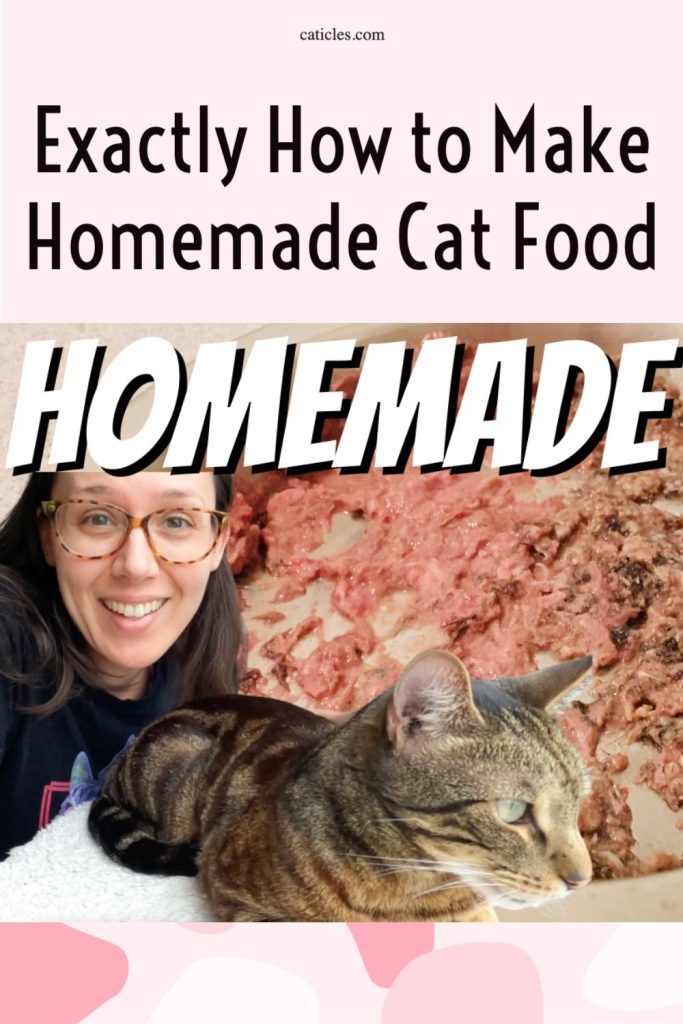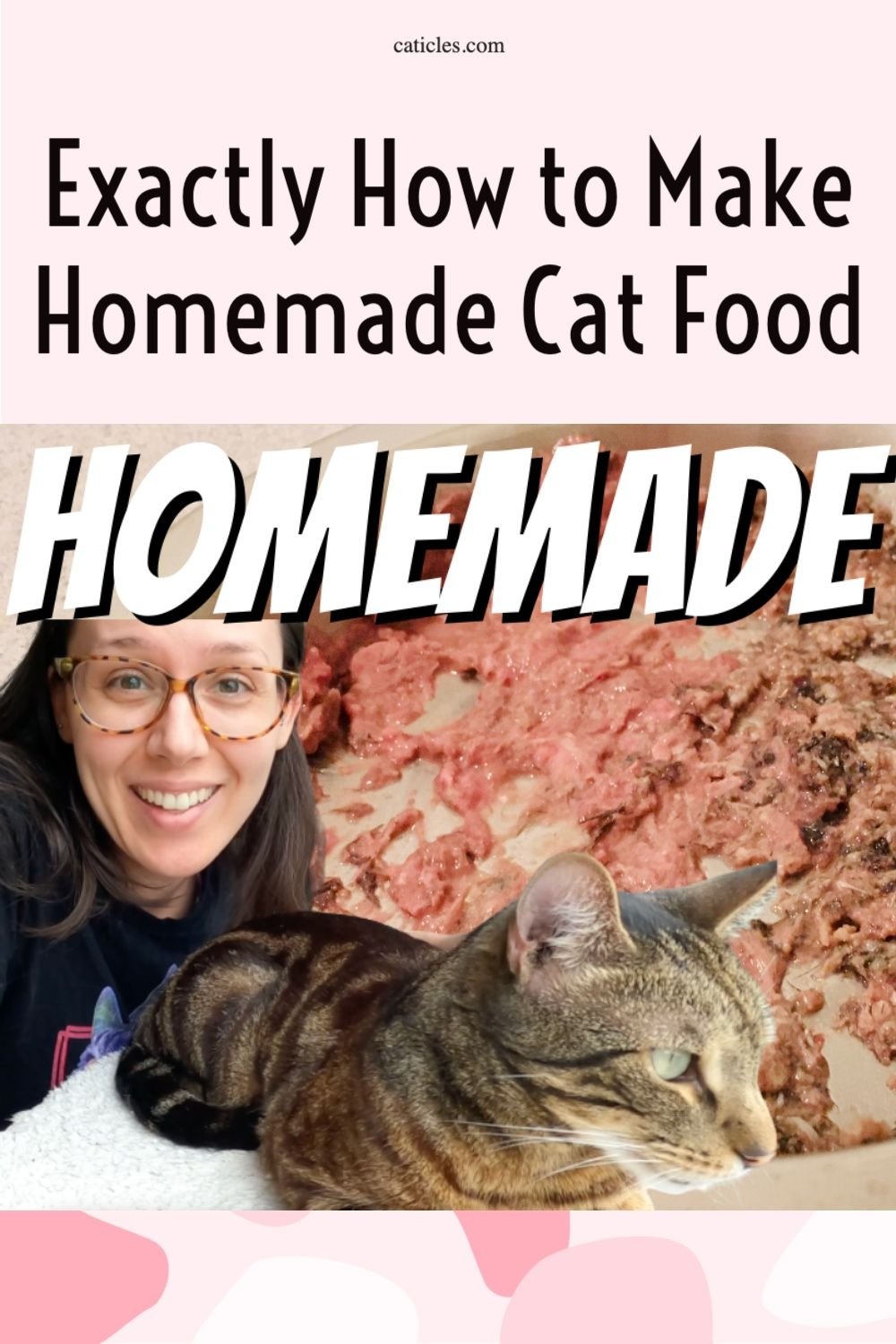Views: 6

Discover the ultimate Homemade Cat Food guide with delicious recipes and helpful meal prep tips for your feline friend’s nutrition.
Explore the ultimate guide to homemade cat food with 10 essential tips for creating nutritious and delicious meals. Ensure your feline friend enjoys a healthy, balanced diet with our expert advice.
Cats are beloved companions, and as pet owners, we strive to provide them with the best care possible. One crucial aspect of their well-being is their nutrition. While commercial pt food is widely available, some pet owners prefer to prepare homemade meals for their furry friends. If you’re considering making homemade cat food, this complete guide is here to help. We’ll provide you with a range of nutritious recipes and valuable meal prep tips to ensure your cat’s health and happiness.
Table of Contents
- Introduction
- Benefits of Homemade Cat Food
- Essential Nutrients for Cats
- Tips for Making Homemade Cat Food
- Homemade pet Food Recipes
- Meal Prep Tips
- FAQs
- Conclusion
Benefits of Homemade Cat Food
Making homemade cat food offers several benefits for both you and your feline companion. Firstly, it gives you full control over the ingredients, ensuring that your cat receives a nutritionally balanced diet. Additionally, homemade cat food allows you to cater to specific dietary requirements, such as food allergies or sensitivities.
Another advantage is the use of high-quality ingredients. You can select fresh meats, vegetables, and grains, avoiding preservatives, artificial additives, and fillers commonly found in commercial pet food. This can contribute to improved overall health, digestion, and even a shinier coat for your furry friend.
Essential Nutrients for Cats
When preparing homemade cat food, it’s crucial to ensure it contains all the essential nutrients necessary for your cat’s well-being. Some key nutrients include:
- Protein: Cats are obligate carnivores, and protein should make up a significant portion of their diet. Opt for lean meats like chicken, turkey, or fish.
- Fats: Essential fatty acids, such as omega-3 and omega-6, are vital for your cat’s skin, coat, and overall health. Incorporate fish oil or flaxseed oil into their meals.
- Carbohydrates: While cats don’t require many carbohydrates, including a small amount of cooked grains or vegetables can provide fiber and energy.
- Vitamins and Minerals: Ensure your cat’s diet includes appropriate amounts of vitamins A, D, E, and minerals like calcium, phosphorus, and potassium.
Tips for Making Homemade Cat Food
Creating homemade cat food can be a rewarding experience. To ensure you provide your cat with a nutritious and balanced meal, consider the following tips:
- Consult with a veterinarian: Before making any dietary changes, consult your vet to discuss your cat’s specific needs and any potential health concerns.
- Follow balanced recipes: Utilize trusted sources or consult with a veterinary nutritionist to access well-balanced homemade pet food recipes.
- Invest in quality ingredients: Opt for fresh, human-grade ingredients, and choose organic options whenever possible.
- Food preparation and storage: Practice good food hygiene, including proper cooking, storage, and refrigeration techniques to avoid bacterial contamination.
- Gradual transition: When introducing homemade Pet food, make the transition gradually to prevent digestive upset. Mix small portions of the new food with your cat’s current diet.
Homemade Cat Food Recipes
Here are a couple of nutritious homemade cat food recipes to get you started:
Tuna and Pumpkin Delight
Ingredients:
- 1 can of tuna (in water)
- 1/4 cup cooked pumpkin
- 1 tablespoon fish oil
Instructions:
- Drain the tuna and mix it with the cooked pumpkin in a bowl.
- Add fish oil and mix well until thoroughly combined.
- Serve a portion to your cat and refrigerate the remaining in an airtight container.
Chicken and Rice Feast
Ingredients:
- 1/2 cup cooked chicken (shredded)
- 1/4 cup cooked rice
- 1 teaspoon chicken broth
- 1/4 cup peas (cooked and mashed)
Instructions:
- Mix the shredded chicken, cooked rice, chicken broth, and mashed peas in a bowl.
- Stir until all ingredients are well combined.
- Serve a portion to your cat and store the rest in the refrigerator.
Meal Prep Tips
To make the meal prep process more efficient and convenient, consider the following tips:
- Bulk cooking: Prepare larger batches of homemade cat food and store them in portion-sized containers in the freezer. Thaw a container as needed.
- Label and date: Properly label each container with the recipe name and date of preparation to ensure freshness and avoid confusion.
- Variety is key: Offer your cat a variety of recipes to keep them interested and to provide a wider range of nutrients.
- Supplements: Consult with your veterinarian to determine if any specific supplements are necessary to meet your cat’s individual nutritional needs.
FAQs
Q: Can I feed my cat only homemade food?
A: While homemade cat food can be a healthy addition to your cat’s diet, it’s important to ensure that it provides all the necessary nutrients. Consult with a veterinarian or a veterinary nutritionist to develop a well-balanced meal plan.
Q: How often should I feed my cat homemade food?
A: The feeding frequency depends on your cat’s age, weight, and specific dietary requirements. Generally, cats should be fed two to three times a day. Consult with your vet for personalized recommendations.
Q: Can I substitute ingredients in homemade cat food recipes?
A: It’s essential to maintain a balance of nutrients in homemade cat food recipes. Consult with a veterinary nutritionist before making any ingredient substitutions to ensure your cat’s dietary needs are met.
Q: Can I use raw meat in homemade cat food?
A: Raw meat carries a higher risk of bacterial contamination and should be handled with caution. Consult with your veterinarian to determine the best approach for incorporating raw meat into your cat’s diet.
Q: How can I tell if my cat’s homemade food is nutritionally balanced?
A: Working with a veterinary nutritionist or using trusted homemade cat food recipes ensures proper balance. Regular check-ups and monitoring your cat’s health and well-being are also important indicators of a balanced diet.
Conclusion
Making homemade cat food can be a rewarding experience that allows you to provide your feline companion with a nutritious and personalized diet. Remember to consult with your veterinarian, follow balanced recipes, and prioritize high-quality ingredients. With careful meal prep and attention to your cat’s nutritional needs, you can ensure their health, happiness, and well-being for years to come. Enjoy creating delicious homemade meals for your beloved feline friend!

